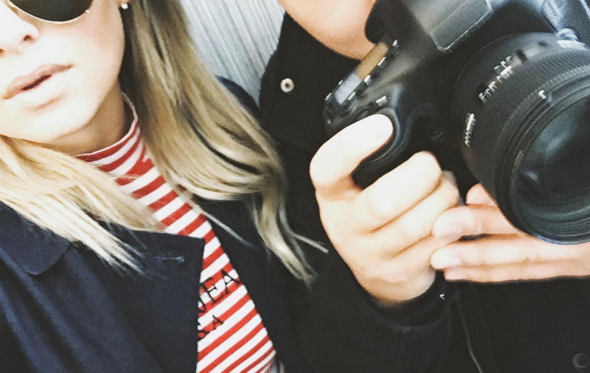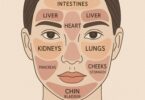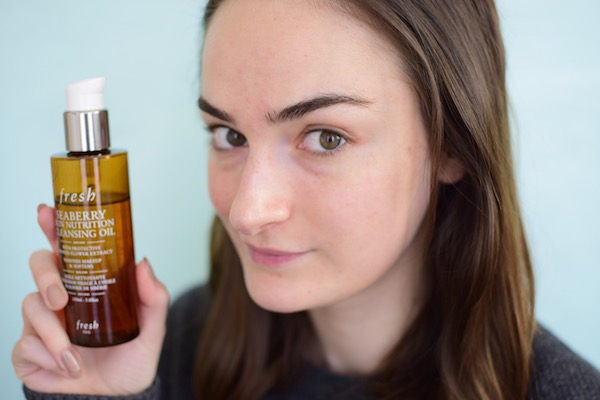There’s an epidemic of ‘social media influencers’ who have built themselves on almost entirely fake followings… and yes, I’m coining the term ‘imposter influencers’ because they have just as much value as the cheap perfumes you saw at the drugstore in the 90s.
I recognize that what I’m about to outline here is sure to ruffle a lot of feathers. The feathers of some of my colleagues (because yes, they’ve Instagrammed their way to the top of media circles), the feathers of many ad and PR agency executives, and probably the stacks of ‘new media’ agents that exist just to serve these imposter influencers. Oh, and let’s not forget about all the brands struggling to make it in a constantly evolving mediascape. Before I dissect exactly how, why, and tips to detect all these frauds (and I stand by that, if you’re taking money from someone under a false pretense– that’s fraud) I want to say that I DO, in fact, believe that buying ads on social media is actually a great idea. But so is having a salad, and if your ingredients are fake and over-processed… well, are you really helping your body?
Who is making 10k for an Instagram photo?
Not me, and I’m totally okay with that. I don’t have a million followers. I don’t have 500k followers. I have around 100k, and it’s taken me about 3.5 years to gradually creep up to that ever growing number. If I was constantly throwing photos of myself up (taken with one of my many cute marble phone cases) there dressed in 24k gold and dancing with the Obama family I suspect I’d get the number to move higher, faster… but for now? For now I’ll have to accept the steady, slower growth that comes along with being a writer and TV host. Shucks. But yes, there are gals like this 22 year old who claim to have millions of followers and easily get paid 10k++ for a shot of them in some jeans, drinking an energy drink, or trying a new skin cream.
Are they real followers with real buying potential? I mean, if you’re some skincare company you don’t want to just toss this money into the wind, right? I’ll break all that down in a minute, but what it really boils down to is being able to know, see, and understand the way followers work on each of these social networks. Instagram is notoriously the biggest pot of bullshit, though.
“Like many quality marketing efforts, there’s quite a bit of manual effort and evaluation that needs to go into an influencer campaign,” explains Molly Lynch, adjunct professor at DePaul University and director of Lynch Communications Group. “You have to look at several places in their profiles beyond just numbers to determine if they’re the right influencer for your brand.”
If you’re not willing to spend an hour or so vetting your investment, get out of the game– it’s not for you, and you’ll most certainly lose your job at the agency when the client finds out you’re pissing their money away.
Which industries benefit the most from social media sponsorships?
Personally, I think anything that’s visual is a good contender. Fitness, beauty, fashion, auto, food, some health, travel– you name it. If you’ve got something that presents well in photos, you have the potential to drum up a cool, devoted audience that’ll really buy things. If you’re selling insurance or some other intangible? It’s maybe not the best idea, but sponsored blog posts that are later shared on services like Twitter and Facebook are great for that. There’s no reason for a car insurance company to ever sponsor a Snapchat. Get real, the ROI there won’t be able to compare for even 2 seconds with a Snapchat sponsored by a wine or lipstick brand.
How can you tell who is real and who is a BS artist on Instagram?
Engagement is everything, but it’s not as simple as likes and comments. There are ratios, quality, and a whole bunch of other jazz to consider. For example, if someone’s profile shows they have 50k followers, but their photos only get 20 likes? Or a couple comments? OMG– run, don’t walk. If they’ll lie that blatantly about photos of their dinner, what else? But you probably knew all that, so let’s get down to the nitty gritty. Here’s where I’ll likely lose a bunch of friends but hopefully gain your trust.
-
- The likes to followers ration needs to hover AT LEAST in the 1.8 to 2.5% range. In other words, if you have 10k followers, at least 180 likes should be on each upload.
- If the likes to followers ratio is way above 7%, something is probably amiss. It’s not hard to buy ‘likes.’
- The comment to likes ratio should typically be at least 7%, but higher is better. If you have 100 likes on a photo, you should have at least 7 comments.
- Comments that just have words like ‘cool’ or ‘USA forever’ or ‘good’ are usually bought directly from 1800bullsht.org. REAL comments are a combo of encouragement, sometimes questions like ‘I love that top, where did you get it?’ or even tagging other people so they can see too. Tags are especially important, because that’s one of the ways accounts grow. Aside from enjoying my life and wanting to say and post funny things, one of the many benefits of humor posts is that people want their friends to laugh too– so if you upload a photo of yourself cuddling with a kitten, yes, people will tag their cat-loving friends, and eventually you’ll end up with some new, organic followers.
- If they don’t do anything other than Instagram. C’mon– be logical here. If you weren’t a personality before Instagram, you didn’t just magically end up with a million followers. If you’re a pro ball player, cool, you’re in the real club. Professional model, writer, blogger, chef, or makeup artist? Wonderful. But if you didn’t have a ‘job’ before Instagram, I’m calling BS for the most part. This isn’t an ‘if you build it, they will come’ type structure. Build YOURSELF, and then they’ll come.
I’m going to give you a loud and clear example without naming names, because I’m not in the biz of shaming anyone– I do, however, want shed some light on the industry that’s COSTING many millions of dollars each year (and I wrote costing vs generating for a reason). Recently there was a post on Czardom PR board on Facebook that I follow closely because it’s a great, collaborative community for everyone in the industry. There was a PR gal who posted on behalf of her client something along the lines of ‘SallySueSmithLovesFashion is heading to New Orleans and would love a free trip, free food, free hotels, and free everything! She has 200k followers.’ Sounds good, right? Well, SallySueSmithLovesFashion’s Instagram followers were almost entirely fake. If you looked closely at her profile you could see that her authentic following was closer to 5,000. Um, OMG– imagine if you’re a local Hyatt throwing your best suite out for an entire weekend in an already-suffering economy? That’s not okay, and it gives the rest of us real people the worst possible names.
And there’s a usually-silent understanding from just about everyone in the actually legitimate media community about this. We’re laughing at all the idiots paying for posts from BS artists.
“Maybe I sound like a cranky old lady but there’s days I can’t wait for that bubble to burst,” shared my best friend and major media contributor, Aly Walansky. You can find her writing almost daily for The Today Show, Men’s Health, Food & Wine, and tons of other magazines that, you know, have actual readership. “I want people to be paid for talent, for skills, not because they are 22 and look great leaning against a tree in a skirt.”
Does that mean BS social media artists have ZERO value?
Sadly, no, it just means their value is diminished greatly. The example of the imposter influencer seeking a free trip to New Orleans is actually a great one, because her photos are well-produced, she’s stylish, and is very pretty. I mean, if a brand is looking to have someone produce original content for them on the cheap– there’s value there. Is that worth thousands? Definitely not. That’s a $100-200 value contribution at the absolute most. If the personality or account in question is food based, there’s the time and value associated with preparing a recipe. But again, that never = thousands unless you’re talking about a British monarch preparing sushi with your rice.
Not everyone sees the value in the BS, though.
“Look at their engagement rate. A good number on Instagram is 3%. If someone with 300,000 followers is not getting AT LEAST 9-10K engagements (likes and comments) per post, then don’t even speak to them,” shares industry veteran Brittany Hennessy.
What social networks help weed out imposter influencers?
To start, Facebook. I don’t care if people are like ‘oh, it’s old school, we like the new stuff like Snapchat.’ You know why it’s still around and doing well enough to acquire other companies like Instagram? Because their BS-detecting algorithms are the best out there, and people generally feel like they’re getting an authentic experience. They may not like what their friends have to say all the time, but it’s real vs weird bots. Sure, you can buy fake page likes. Anyone in the world can go buy 1 million page likes right now, but it’s easy to spot when posts from that personality or brand get very little or no engagement. If a brand has a million followers that are all bots via Bangladesh, do you think you’ll see a lot of likes and comments? Unlikely.
READ MORE: Bodega Cats of Instagram
It’s also harder to get a little blue checkmark, or a ‘verified profile’ if you’re loaded with faux followers. Facebook verification, unlike some of the other networks, is a manual process with real people sitting in corporate offices (typically in either New York or California) sifting through the profiles in question. And no, you can’t ‘buy’ a blue checkmark. If someone tells you that, they also have a bridge heading to Brooklyn that they’d like to sell you. The beautiful thing about Facebook is that content people respond to gets pushed up higher into newsfeeds automatically, especially if it came from a verified profile. The same is not true with Twitter/Instagram. Snapchat is still the ‘wild west’ so to speak.
What should you look for in an authentic influencer?
They should be on brand and authentic as a person, too. If you’re looking to sponsor a makeup artist because you just launched your new line of makeup brushes, check out their past posts. If they’re engaging people, answering questions, ‘liking’ other people’s work, etc– they’re good. If they’re sort of static, maintained by a social media account exec named Barb, and there’s no interaction… well, I’m not judging you for putting your money there, but I am saying I wouldn’t spend my own that way. Also, are they engaged in talking about social issues beyond just their makeup craft? That’s a big deal, too, because real followers like real personalities.
READ MORE: Why Blogging Networks are Bad for Bloggers AND Brands
That makeup artist in question might post about why it’s important to her to only eat vegan, raw things (and personally I don’t give a damn, but that’s a social/health issue that her followers will react to– either good, bad, or indifferent). She doesn’t need to pretend to be Leo DiCaprio and go off on a bender about climate change when she’s not even remotely educated in that subject, but if she’s trying to raise awareness for dolphins off the coast of her hometown in Maryland? Sure, that’s great.
So what SHOULD we be paying and earning for these social sponsorships?
Well, that really depends on first, the amount of work that goes in. If you’re asking a famous blogger to do a personal recommendation of your product or service, and then amplify it on social– that’s a much bigger ask, especially if original photography or special prep is involved, which it so often is.
Jonathan Cheban bills out a reported $3,500 per Instagram.
A photo posted by Jonathan Cheban (@jonathancheban) on
If you’re talking about a straight-up photo upload to any of these social networks with a brand tag, maybe a hashtag, and a little ‘#spon’ at the end, it’s likely less. Here are some helpful guidelines, but nothing is 100%. Every case is an individual one.
- Do not offer anything less than $100. If your budget is under $100, you need to go away. The amount of time it takes to email back and forth, invoice, etc is simply not worth it. That’s minimum wage in Uganda by the time you work it all out. Not today, Satan.
- If the work is really minimal, you can consider around $100 for every 10k followers on Instagram. So, if you need a food blogger to capture your new line of mint-enhanced yogurt, and they have 60k authentic, engaged followers you should expect to pay around $600. If extra work is required, plan for that.
- Facebook guidelines are different, because some profiles are ‘pages’ and some are friendship-allowing ‘profiles’ that are the same as any regular joe out there, but with open subscription capabilities– meaning anyone can see or read their content. If they have a blue, verified checkmark badge, you’re starting at a base of at least $500. Don’t offer less than that, because it’s insulting. The sheer value of their newsfeed amplification is huge, and the key beyond that is making sure you have brand and a personality that’s cool enough to garner conversation. If you do, you’ll get in front of tons of eyeballs easily. If you don’t well, again, why are you even doing this? Expect to pay an additonal $40-75 for each 1,000 of their friends and followers. For example, if a verified profile (let’s say an actress) has 100k followers, a fair price for her posts would be $4500. The potential here is greater than instagram, too, because of that magical ‘share’ button.
- Snapchat rates are still shaking out, especially because the posts are temporary. If anyone cares to weigh in on what they’re charging, paying, or supporting… please, weigh in below in the comments section.
- Twitter. Ah, another tricky one. It seems easy, but it’s not. I mean, Twitter parties used to be everywhere and the ‘trending topics’ and ‘hashtags’ were a brilliant idea– but the issue is that average user engagement is actually not the same as elsewhere on the Internet. I mean, if you’re having a Twitter party for a jewelry company, over 2,000 Twitter party fanatics and super users will show up in a heartbeat. But are they real buyers? Often not. There are SOME power users on Twitter who are terribly, wonderfully effective– it’s just not the average. If you’re one of the good ones, high five.
So what’s the point here?
Spend your money wisely. Don’t do the typical agency thing where you’re assigned a 500k budget for social and just spread it out quickly so you can get back to your green juice and SoulCycle. Be responsible, people work hard to make companies successful.
If you’re an influence imposter, this is an opportunity for you to invest your energy into a real skill and make something magical of yourself– you’re obviously good looking and motivated. Also, yes, grammar matters.
If you liked this, join me on Facebook here, or on just about any other social network as @brycegruber.









Great article.. I plan to share those in some of my groups for bloggers I am in.
THANK YOU SO MUCH FOR YOUR ENCOURAGEMENT!!!
So. Much. Awesome.
*Cue deep breathe of this fresh air*
You may have lost followers with this post, but you’ve gained the trust of at least 1.
Thank you <3
Super awesome! Is there an app that you used to discover it was only 5k??? It would be awesome to know how to do that!
This was amazing. I hope more people understand the need for deep-dive research behind these Instagram influencers!
I agree with all of this. But the comments stats you said are a bit unrealistic. I can assure you I never get 7 comments per 100 likes on my photos. I’d be lucky to get seven comments on 300 likes… and I don’t pay for likes etc. But kudos to the people that do get that!
Try asking a question in your caption. My comments shoot up whenever I do that 😉
So insightful and aids with the pressure of a working actor who is constantly asked what my social numbers are even when my IMDB credits and ratings tower over talent often casted strictly off imposter numbers!!
Absolutely wonderful post! I am myself building our brand right now and doing my best to have it organic (without buying followers) and it hurts me seeing fake people overpass me as if I am a tree on a highway. I do believe however that time will “cure” this marketing disease.
Thank you for fearlessly putting it out there!
My friend and I were just talking about this! You nailed it!!! Though my comments engagement is a bit low with the ratio that you mentioned, and of course I don’t buy “likes”. This just means I still have a lot to work on.
I agree with most of this post, except with the point that more than 7% likes indicates the likes are fake. I really think that depends on the niche. I follow some incredible photographers on Instagram who don’t have a huge number of followers, maybe 1-8k, who easily rack up 400-1000 likes. But you can tell the likes are real because your next point is valid, about comments. They also get 20-70 comments on every single post.
Other than that, this is a great point! I’m part of an IG mastermind group, and we talk about engagement all the time. I have less than 3k followers, but my engagement from likes is 6-8%. Building a genuine, engaged following takes time and a lot of work, but I hope hit that magical 10k later this year.
VERY informative! I have been so frustrated with IGers who have skyrocketed their amount of followers as I have been chugging along with 1-2 new followers everyday FINALLY hitting the 6K mark.
Nailed it! I always turn away from Instagram accounts with tons of followers and almost no engagement nor the likes.
I have a photography Instagram with 2.4k and get around 400-500 likes, 600 on a good day. However comments do fluctuate for that. Sometimes we get tons and sometimes we get none. However, we do interact with our community because I’d rather build that up instead of just adding numbers. It’s frustrating getting passed up potential followers or companies by those who have higher following counts but get little engagement. I love comparing my photo Instagram to my personal because I have 1k on that and get around 100-200 likes.
Great post! Definitely something that needed to be said.
I love the post. Genuine consumption and community is what I have been focused on for years but the hard reality is that the industry has to go through this (long) learning period before they will accept this doesn’t work. Executives operate on their own beliefs and not data or science before they can get to this point. The bubble will burst and we will slowly get back to the reality that community matters. Thanks for the post.
Interesting post. and we agree on the most of it. except your percentage about likes and comments. as an account with 3,3k follower (grown over the past 1 year), we get between 350 and 700 likes per picture, unpaid of course. if you tell us now, 10k with (at least) 180 likes are realistic and less fake, what are we doing “wrong” then? to be honest: 7-10% constantly on the last pictures, that is what we are expecting if talking to “influencers”, hotels and partner blogs. think about it. and don’t forget to take the frequence of posting, the real growth from picture to picture of a certain amount of time AND the comments in consideration. these points are missing in this article, in our opinion. but thanks for bringing the topic on the desk to discuss. a good social media manager/PR person should not believe in follower numbers. in our experience, thats something everyone needs to learn, and it is a run to stay up to date about it! 🙂
sorry.. but did you really delete our comment? i made a screenshot (as usual). wow. so much about Why ‘Imposter Influencers’ Need to Go.
Nope– we only delete ‘spam’ comments, and since all comments are moderated by real humans, those left on the weekends sometimes take a day or two to be posted.
Preach, preach. Wonderful article my fellow Czar!
I know a ton of fake social media artists out there. All my followers are real, that’s all I can say and I bust my butt to attain every one of them.
I don’t believe the ratios were accurate, I have a completely organic following of 15.5k Followers on Instagram (@bennettfilm) and I get around 1,500-2,000 likes per post which is way more than 7%. Before Instagram lowered the engagement, I was getting 2500-4000 likes per post with just 10k followers. I don’t think likes being “too high” is a good indicator of a fake following. I’d say an organic following should AT LEAST have a 10% Like to follower ratio or else its a red flag.
I finally got a minute to read this and brava lady! are you working on a textbook? I’d buy it:)
Wonderful post. It’s infuriating when you see your own follower number increase at snail speed while another “influencer” zooms unbelievably high. One day they have 4K followers and the next they’re thanking everyone for helping them reach 10k! What’s worse is brands and PR are just interested in numbers. A high end beauty brand recently collaborated with 20 something year old fashion bloggers for their anti-aging foundation! How ridiculous is that? Yes, they are getting the numbers but are they reaching out to their target audience by doing this?
PS- my Instagram handle is @indianshringar. I’d really appreciate it if you could take a look and give me tips on how I could increase followers and engagement. Thanks 🙂